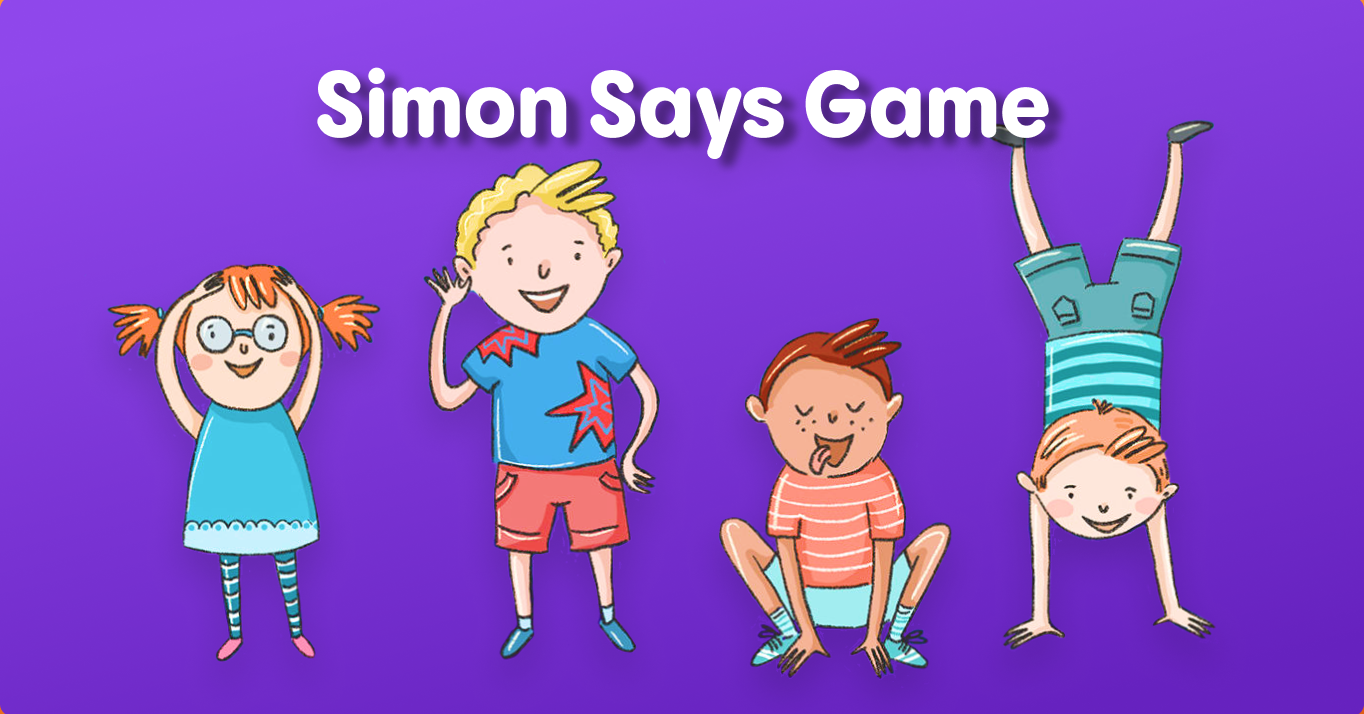English as a Second Language (ESL) teachers are always searching for ways to help their learners understand and use English in an efficient and engaging way. One teaching technique that has gained popularity is the use of Total Physical Response (TPR). Developed by Dr. James Asher in the 1960s, TPR is a type of teaching method that employs physical movement to facilitate language acquisition. In this article, we’ll explore how TPR works, why it’s effective, and how to incorporate it in an online classroom.
“A reasonable hypothesis is that the brain and the nervous system are biologically programmed to acquire language, either the first or the second in a particular sequence and in a particular mode. The sequence is listening before speaking and the mode is to synchronise language with the individual’s body.” – James Asher
What is Total Physical Response (TPR)?
TPR involves giving commands that ESL students need to act out physically. One of the key principles in using TPR is to establish meaning before introducing the vocabulary. This way, learners can make a connection with the word through movement rather than relying on memorization.
The meaning behind the words
TPR is designed to mimic the way we learn our first language. Infants and toddlers learn their first language by associating what they hear with what they see and how they feel. This mental and physical association helps create a deeper level of language learning. TPR employs this same process by allowing learners to associate words with physical actions, thus solidifying the vocabulary in their memory.
How TPR works for ESL learners
TPR is particularly effective for young learners, but it can also be useful for learners of all ages. It’s especially helpful for students who struggle with memorizing vocabulary, students who are non-verbal, or those who find it hard to express themselves in a new language. Engaging the body in learning makes it easy for young learners to connect and retain a new word or phrase.
How TPR is an Effective ESL Teaching Strategy
Why TPR works for ESL learners
Research has shown that TPR is an effective language teaching method that can help learners improve their English skills. It’s a highly interactive and engaging method of teaching that involves the whole body. This makes it easier for ESL learners to understand and remember new words and phrases.
Combining first language with new language for successful language acquisition
TPR involves the use of the learner's first language for the command's action. This helps in creating a connection between the first language and the new language. The use of the first language can provide a framework for learners to interact in the target language.
Utilizing facial expressions and charades in TPR activities
Facial expressions and charades can be a valuable tool when using TPR. For instance, when teaching the verb “cry,” the teacher can demonstrate the verb by shedding tears and looking sad. This facial expression can help learners understand the meaning of the verb without the need for translation.
The History of TPR: James Asher's Contribution to ESL Teaching
Who is James Asher?
Dr. James Asher is a language-teaching expert and the creator of TPR. Asher is an American professor at San Jose State University, California, with an extensive background in linguistics and education.
How did James Asher come up with TPR?
In the 1960s, Asher came up with the idea of TPR while trying to teach French to his high school students. He noticed that it was easier for the students to understand and retain the new words when he used physical movements alongside the spoken language.
James Asher's influence on contemporary ESL teaching
TPR has revolutionized the way ESL learners interact with the language.
While it was initially developed for teaching French, it has since been adapted for use in various languages. TPR is a valuable asset for ESL teachers as it makes learning a new language more fun and engaging. In conclusion, using total physical response is an effective way to teach ESL students. It utilizes body movement and physical gestures to facilitate language acquisition, making it easier for students to understand and remember new vocabulary. Whether you’re an ESL teacher or an online English teacher, using TPR to teach can make a big difference in the students' learning process.
Guidelines for Using TPR and Other English Teaching Methods in the AllRight Classroom
Modeling strategy with students and teachers
- The instructor will use the associated word to demonstrate movement (s).
- Make sure the learner understands by repeating.
- The pupil will then utter the term and perform the action.
Enjoy a game!
Great examples include Charades or Simon Says. Playing an enjoyable, captivating game aids the pupil in making memories.

“Simon Says” is a game that is well suited for TPR lessons. The game involves giving students instructions and then making sure that the instructions are followed appropriately. This game offers a fun way to learn and practice new vocabulary.
Introduction
Begin by explaining the concept of Simon Says to the students. Let them know that they will be following instructions given by the "leader" (Simon) and performing the actions only when Simon says "Simon says" before the instruction.
Vocabulary Preparation
Before starting the game, introduce a list of action words or phrases that the students will act out. Choose words that are relevant to their level and the topics you have been covering in class.
For example, include actions like "jump," "clap," "touch your nose," or "turn around."
Demonstration
To ensure students understand the game, demonstrate a few examples of Simon Says by acting out simple instructions yourself. Use exaggerated movements and gestures, and clearly show when you say "Simon says" and when you don't.
For example, say "Simon says touch your head," and touch your head, and then say "Touch your head" without saying "Simon says" and refrain from touching your head.
Gameplay
Choose a student to be the first leader (Simon). The leader stands in front of the class and gives instructions using the phrases "Simon says" before each action.
For example, "Simon says jump three times" or "Simon says pat your head." The rest of the students must carefully listen and only perform the actions if Simon says "Simon says" before the instruction. If the leader gives an instruction without saying "Simon says," students should refrain from performing the action. Any student who performs an action without "Simon says" is out of the round.
Variation and Challenge
As the game progresses, you can introduce variations to make it more challenging. For example, you can increase the speed of the instructions, add more complex actions or multiple actions in a row, or introduce conditional instructions like "Simon says touch your nose if you have a pet."
Rotation
After a student is out, choose another student to be the next leader (Simon). This rotation allows all students to have a chance to be the leader and practice giving instructions.
Feedback and Discussion
Throughout the game, provide feedback and encourage discussion. After each round, ask the students about their experiences and any challenges they faced in following the instructions. Discuss the importance of listening carefully and paying attention to the specific phrases ("Simon says") to avoid making mistakes.
Closure
Conclude the game with a brief discussion, allowing the students to share their thoughts and reflections. Highlight the vocabulary and language skills they practiced during the game.
Remember to adjust the difficulty level and vocabulary to match the proficiency level of your students.
By incorporating TPR into Simon Says, you create an engaging and interactive environment where ESL students can actively listen, follow instructions, and reinforce their English language skills while having fun.
Charades is a lively and interactive game that can be a fun and engaging activity for English as a Second Language (ESL) students. It is an excellent way to practice and reinforce vocabulary, improve communication skills, and encourage teamwork and creativity.
When teaching Charades using Total Physical Response (TPR), the following steps can be followed:
Introduction
Begin by explaining the concept of Charades to the students. Emphasize that the game is all about acting without speaking, using only body movements and gestures to convey the meaning of words or phrases.
Vocabulary Preparation
Before starting the game, introduce a list of vocabulary words or phrases that the students will act out. Choose words that are relevant to the students' level and the topics you have been covering in class.
For example, if you have been studying animals, include words like "cat," "elephant," or "frog."
Demonstration
To ensure that students understand the game, demonstrate a few examples of Charades by acting out simple words or phrases yourself. Use exaggerated gestures and facial expressions to convey the meaning clearly.
For example, if you want to demonstrate the word "running," mime the action of jogging in place.
Team Formation
Divide the class into teams of three or more students. Each team will take turns acting out the vocabulary words or phrases while the others try to guess what they are acting.
Rules and Guidelines:
- No speaking is allowed.
- The actor cannot use any props or make any sounds.
- The actor must rely on body movements, gestures, and facial expressions to convey the meaning.
- The actor should avoid using any part of the vocabulary word or phrase in their actions.
Gameplay
Select a student from one team to be the first actor. The actor picks a word or phrase from the prepared list without showing it to anyone. The actor then starts performing actions to represent the chosen word or phrase, while the other team members try to guess what it is. The actor can continue acting until the correct word or phrase is guessed or until a predetermined time limit is reached.
Rotation
After a word or phrase has been correctly guessed, it's the next team's turn to act out a word. Continue rotating the roles until each team has had a chance to act.
Feedback and Discussion
Throughout the game, provide feedback and encourage discussion among the students. After each word or phrase is guessed, ask the students to explain how they understood the gestures and actions used by the actor. This promotes comprehension and language analysis.
Variation and Challenge
To make the game more challenging, you can introduce additional rules, such as acting out the word in slow motion or using only one hand. You can also include more advanced vocabulary as the students progress.
Closure
Conclude the game with a brief discussion, allowing the students to share their thoughts and experiences. Highlight the vocabulary and language skills they practiced during the game.
Remember to adapt the difficulty level and vocabulary to suit the proficiency level of your students, ensuring they are challenged but not overwhelmed. With the TPR approach, Charades can be an exciting and immersive way for ESL students to practice their English skills while having fun and being physically engaged in the learning process.
Do not be understated!
Although individuals have grown accustomed to speaking and communicating without the use of TPR, TPR may not come readily to teachers. However, in an online classroom, being particularly dramatic and flashy with your movements aids the student in really understanding the word or concept you are teaching and creates a more memorable experience for the student. Plus, it is likely to turn them into a huge fan of your class, and you will also have more fun!
ESL teachers at Allright.com know that teaching and learning a new language idea, TPR is an engaging and enjoyable technique to get both teachers and students involved. While it can be difficult to maintain students' attention when you aren't present, TPR is a fantastic technique to help your students learn English online. We hope these TPR hints persuaded you to try out the methods in your upcoming class!









